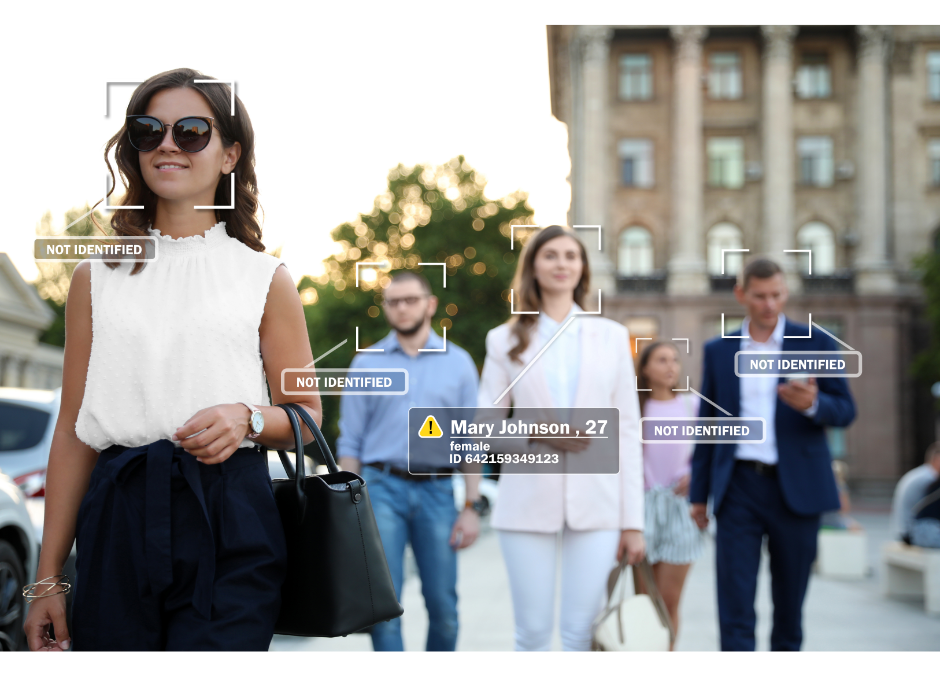Many people may hold the belief that AI in threat detection has only developed over the last decade. This is not quite true. It is important to acknowledge its roots right back to the early development of video surveillance in the 1930s. The earliest CCTV security cameras were available to the public in 1949 and marked a significant milestone in video surveillance. Integration of artificial intelligence in video surveillance has transformed the way security is managed all over the world.
These AI-powered systems can process vast amounts of video data in real time and enable detection and response to potential threats quickly and efficiently. AI-powered security systems can differentiate between individuals and objects, recognise faces, and identify suspicious behaviour. There are many applications for AI. Deep learning can improve video surveillance on the whole, even outside of the security industry. AI is able to effectively analyse patterns and movements and detect abnormal activities in order to raise alerts to security personnel.
So what does this mean for the security industry? Do we no longer need our guards and response teams? Absolutely not – we need them as much as ever – however, this means that they are taking a proactive role instead of a reactive role. Security guards and response teams are no longer on the back foot. Effective CCTV monitoring using AI video analytics actually helps prevent crimes before they take place.
AI-Powered camera surveillance is really a story of continuous innovation. This technology has certainly made a significant impact to the field of surveillance, enabling a more proactive approach to threat detection and response in video surveillance systems.
Advantages of AI-driven threat detection and response
There are several advantages to using AI in threat detection and response in camera surveillance:
- Better Threat Detection: Vast amounts of video data are analysed in real-time, which enables our Alarm Receiving Centres (ARCs) to detect and respond to potential threats quickly and efficiently.
- Fewer False Alarms: AI-powered video analytics can filter out false alarms and notify ARCs of real dangers, which will reduce the chances of missing real threats or wasting resources on investigating false alarms.
- Better Situational Awareness: ARC security staff are able to keep watch over the entire premises 24/7 with better situational awareness without needing to address many nuisance alerts.
- Scalability and Flexibility: The scalability and flexibility of AI-powered video surveillance systems are unparalleled and can adapt to many different environments. This technology can accommodate various camera setups and configurations and can be applied in almost any setting.
- Advanced Analytics: AI-powered video analytics has advanced functionalities such as object detection, motion tracking, and predictive analytics. These advancements significantly improve the accuracy and efficiency of security systems overall.
Disadvantages of AI-driven threat detection and response
One would think that there are no disadvantages to improved video surveillance which can prevent crime, protect people and in general make lives better. However, it is important to consider whether there could be any negative consequences if AI is misused in this setting.
- Transparency and Interpretability: Algorithms used for threat detection are not always transparent, which may make it difficult to understand how they can be improved.
- Potential Bias and Manipulation: This lack of transparency of how AI decision-making processes work may leave organizations vulnerable to potential bias or manipulation. This lack of transparency can lead to poor decisions, potentially impacting an organization’s security.
- Privacy Concerns: AI-powered video analytics systems may raise privacy concerns, as they collect and analyze vast amounts of data, which can often include sensitive personal information. Questions about privacy and data protection need to be considered, particularly when it comes to facial recognition technology.
- Technological Limitations: These systems are not infallible and effectiveness may vary on the environment and the circumstances. However, the field is continuously evolving and machine learning improves with every image / video that is used in model training.
How can we as leaders in the AI-powered video surveillance industry, be ethical and responsible in rendering these services?
Companies within this industry simply must take the following issues into account when developing their software and providing services to the public:
Privacy and Data Protection: The use of AI in video surveillance needs to comply with privacy regulations and safeguard sensitive information. Only necessary data for security purposes should be collected and measures need to be implemented to ensure responsible use and accountability.
Transparency and Accountability: There should be transparency in the AI-decision-making processes and it is important to continue to maintain human oversight, particularly where critical decisions need to be made. Regular audits and reviews should be carried out to ensure moral and legal obligations are met.
Ethical Usage: Ethical use of AI video surveillance technology is essential to address privacy concerns. Following clear guidelines and regulations, along with privacy-enhancing technologies, can help strike a balance between invasive surveillance and privacy concerns.
Bias Mitigation: AI algorithms need to be monitored for bias and adjusted as needed to ensure they are fair and unbiased. This will ensure that the system’s understanding of “good” and “bad” behaviour continues to be refined.
Regulatory Compliance: Collaboration with governments and industry bodies can lead to the establishment of clear ethical guidelines is crucial to ensure responsible AI use as well as accountability. The EU recently became the first to put compliance laws into place. At the very least, adhering to GDPR requirements is a good foundation for the ethical application of AI in surveillance.
To ensure one remains ethical and responsible in the rendering of AI-driven video surveillance services, ARCs and AI-driven software companies need to be transparent and accountable in their approach to providing these services to the public.
To learn more about how AI is implemented in our video surveillance software, please visit contact us here.

